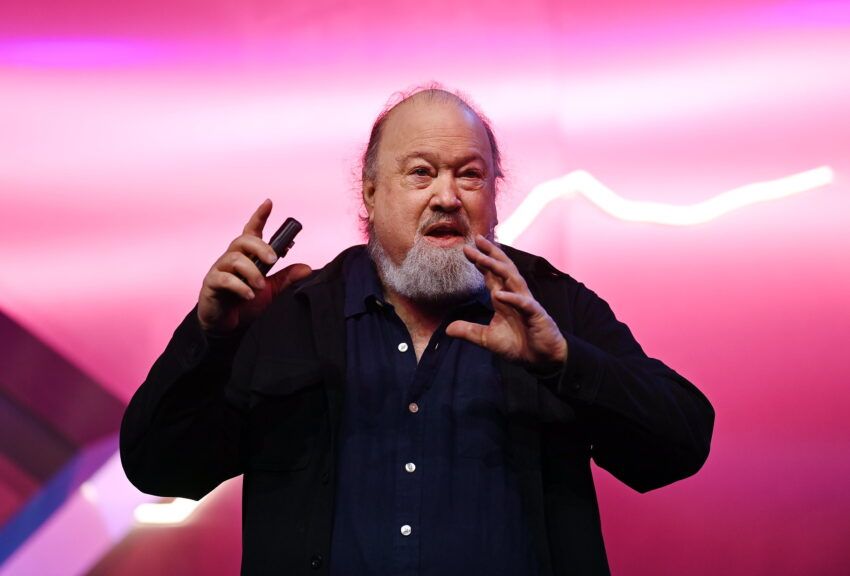Four titans who paved the way for private crypto

We take private crypto for granted today, but it wasn’t always this way. BeInCrypto profiles four entrepreneurs who didn’t take our privacy for granted.
Privacy has been a critical issue from the very early days of the internet. Cryptocurrency and blockchain are no different. However, the invention of the world’s first cryptocurrency, Bitcoin, presented a problem. Public blockchains are transparent and open in nature. Bitcoin, like most cryptocurrencies, is pseudonymous, not anonymous. Most cryptocurrencies do not reveal their full identity. However, their transactions can still be tracked and traced back to them, so they are not completely anonymous.
Today, we have many options when it comes to trading privately. But getting here was no easy feat. Here, BeInCrypto profiled four people who helped us get here. (Of course, the list is far from exhaustive.)
David Chaum
Chaum is often known by names such as “The Godfather of Privacy” and “The Godfather of Cryptocurrency.” He first proposed the idea of secure digital cash in a newspaper in 1983. Chaum founded DigiCash in 1990 to commercialize his ideas, but the company went bankrupt in 1998.
One of Chaum’s greatest contributions to privacy was his proposal for mixed networks. In 1981, Chaum proposed them as a way to communicate anonymously online.
Mix networks run on a very simple idea. You take a set of messages and rearrange (or “scramble”) them so that no one can see which message came from which sender. This process is repeated several times, with each server adding another layer of encryption. Finally, the messages reach their final destination and are decrypted in the correct order. Crypto tumblers (or “bitcoin mixers”) work in a similar way.
Mix networks are at the heart of the privacy browser Tor – which uses onion routing. A technique that originates from mix networks. They have been used to improve the privacy and anonymity of transactions, including cryptocurrencies such as Monero and Zcash.
Chaum is known worldwide for his contributions to privacy technology and secure election systems. Most recently, he founded elixxir, helping to develop one of the world’s first quantum-secure blockchains and instant messengers.

Zooko Wilcox-O’Hearn
Wilcox-O’Hearn is probably best known for his role as founder and CEO of the Electric Coin Company, the creators of Zcash.
Wilcox-O’Hearn co-founded the Zcash company in 2013. Its cryptocurrency, Zcash, aimed to add advanced privacy features on top of Bitcoin’s code base. Since its release, the coin has become known for its pragmatic approach to privacy.
Zcash allows users to selectively disclose information about their transactions. This gives holders a choice to comply with anti-money laundering or tax regulations while remaining anonymous at other times. As the site puts it: “Transactions are auditable, but disclosure is under the participant’s control.”
Wilcox-O’Hearn cut his teeth on DigiCash with David Chaum in the 1990s. However, Chaum’s project was centralized and his company was in control of the minting process. After that experience, Wilcox believed that there was a need for electronic cash that did not require a central authority. Wilcox credits Andrew Miller, a graduate student who suspected he might be Bitcoin’s creator, with introducing him to the zero-knowledge secure system zk-snarks.
Wilcox-O’Hearn has also helped develop other privacy-focused projects. Including Least Authority, a security consulting firm, and the Tor Project, a non-profit organization that develops software for anonymous online communication.
Matthew D. Green
Before Zcash, there was Zerocoin – also known as Zerocoin Protocol – and Matthew D. Green was one of the pioneers.
Zerocoin began life in 2013 as an academic project with his graduate students at Johns Hopkins University. Green and his team wanted to provide users with anonymity by allowing them to convert their bitcoins into an anonymous, untraceable cryptocurrency. Although Zerocoin was originally developed for use with Bitcoin, Zerocoin can be integrated into any cryptocurrency.
The Zerocoin protocol has since been incorporated into a number of different cryptocurrency projects, including Zcoin and PIVX. It has also inspired the development of other privacy-focused cryptos such as Monero.
Green’s research team has identified vulnerabilities in encryption technologies including SSL/TLS, RSA BSAFE, Exxon/Mobil Speedpass, E-ZPass, and automotive security systems, uncovering flaws in over a third of SSL/TLS encrypted websites. In 2015, his team identified the Logjam weakness in the TLS protocol.
Green is also a well-known advocate for public transparency. In 2013, he was one of the original signatories of the “Open Letter to the NSA” calling for an end to mass surveillance. He has been a critic of proprietary software and has called for greater access to source code to improve security and transparency.

Hal Finney
Harold “Hal” Finney was there at the very beginning of Bitcoin. He was the first person to receive a bitcoin from its original creator, Satoshi Nakamoto. In 2004, Finney created the first reusable proof-of-work system, which laid the foundation for the mining process used in Bitcoin.
One of Finney’s contributions to the field of cryptocurrencies was his work on improving privacy features. He was a strong advocate of the use of mix networks – first developed by David Chaum. Finney passionately believed that “the computer can be used as a tool to liberate and protect people, rather than control them.”
Finney was one of the first to explore the idea of using “blind signatures” to create anonymous digital money. He helped develop the first implementation of this concept in the form of the “Reincarnation” system. He also worked on other privacy-focused projects, including an anonymous messaging system called PGPfone.
Alongside Zooko Wilcox-O’Hearn and many others, he was a member of the cypherpunk movement. A collection of radical techno-libertarians who used code and cryptography to achieve digital privacy. His uncompromising attitude to freedom has been an inspiration to many since. Sadly, Finney passed away in August 2014 as a result of complications from ALS.
Disclaimer
In accordance with Trust Project guidelines, this feature article presents the opinions and perspectives of industry experts or individuals. BeInCrypto is dedicated to transparent reporting, but the views expressed in this article do not necessarily reflect the views of BeInCrypto or its employees. Readers should verify information independently and consult with a professional before making decisions based on this content.

























